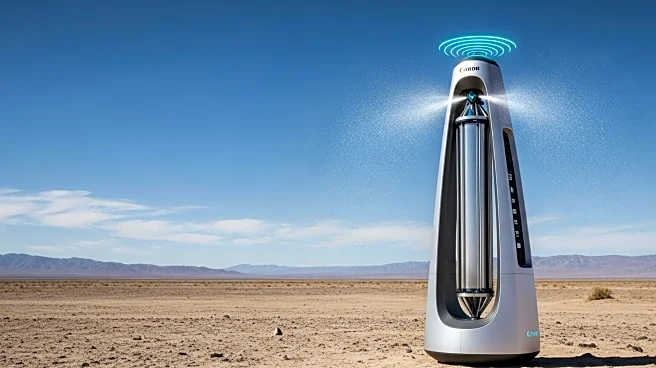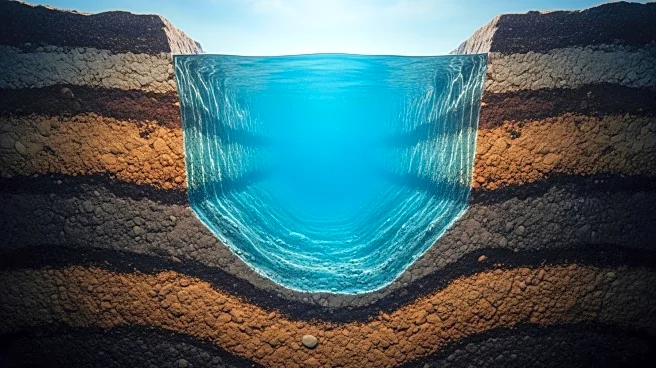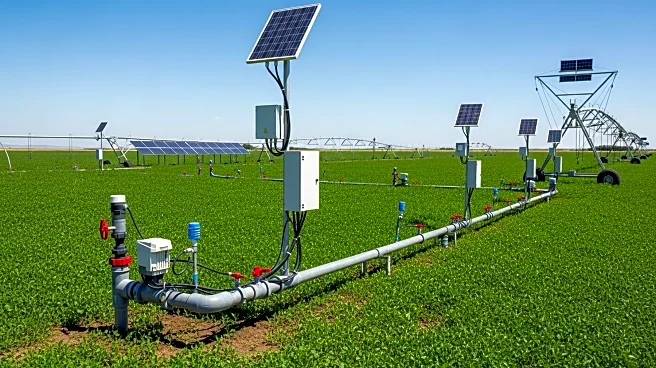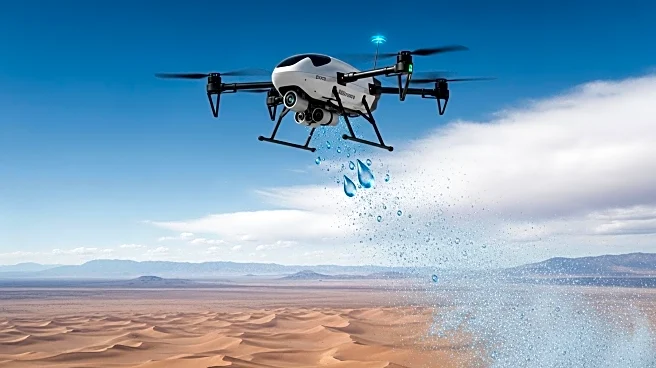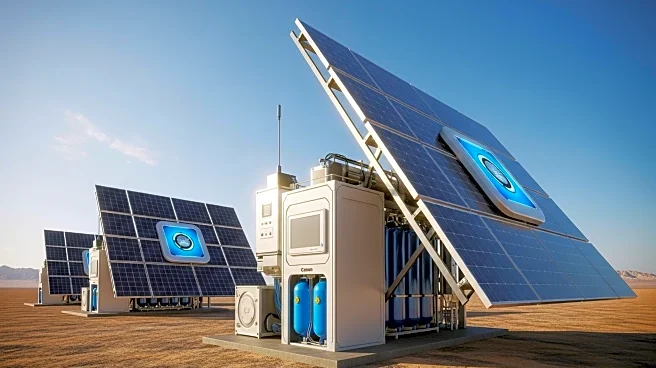What is the story about?
What's Happening?
Engineers at the Massachusetts Institute of Technology (MIT) have developed a new technology to extract drinking water from the air, even in extremely dry environments like Death Valley. The device uses a hydrogel material that absorbs water vapor from the air, condenses it on glass, and channels it into a tube as fresh water. This technology aims to address global water scarcity, which affects over 2 billion people worldwide. The device is powered by solar heat and can produce around two-thirds of a cup of water per day, with the goal of eventually supplying households in arid regions.
Why It's Important?
The development of atmospheric water harvesting technology is significant as it offers a potential solution to the growing issue of water scarcity exacerbated by climate change. While traditional methods of water collection are energy-intensive and costly, MIT's device provides a low-cost alternative that could be particularly beneficial in regions with unreliable water sources. However, critics argue that the technology is expensive compared to tap water and produces limited quantities, making it more suitable for niche applications rather than widespread use.
What's Next?
Further research and development are expected to improve the efficiency and cost-effectiveness of atmospheric water harvesting devices. As the technology scales up, it may find applications in emergency situations, military operations, and industries requiring ultra-pure water. Companies like H2OLL and AirJoule are already exploring commercial uses, indicating a growing market interest. However, widespread adoption may take a decade or more as challenges related to cost and yield are addressed.
Beyond the Headlines
There are concerns about the environmental impact of atmospheric water harvesting, particularly whether it could contribute to global drying trends. However, experts suggest that the water extracted is returned to the global system quickly, minimizing long-term effects. The technology also highlights the need for innovative solutions to manage existing water resources more efficiently.
AI Generated Content
Do you find this article useful?
